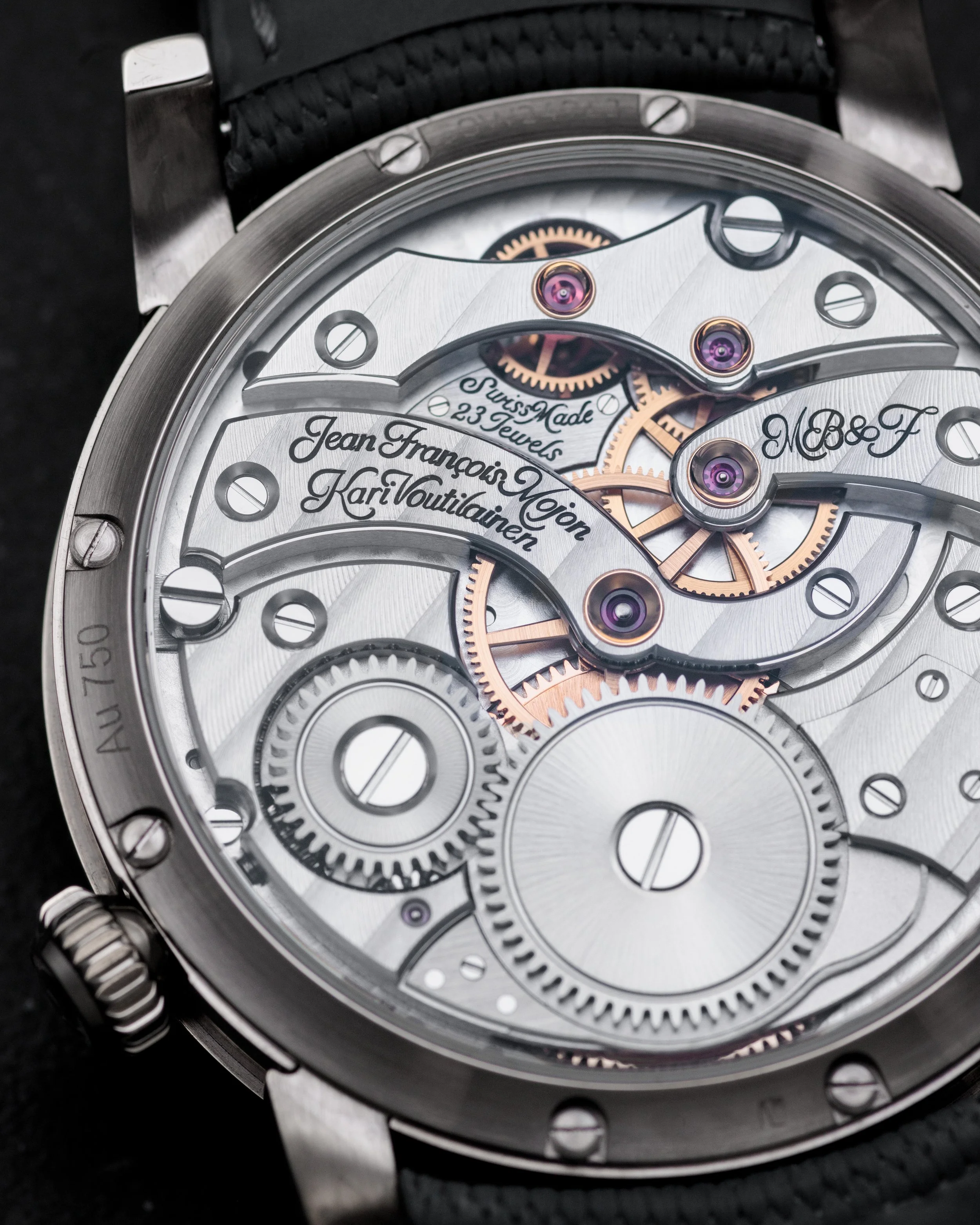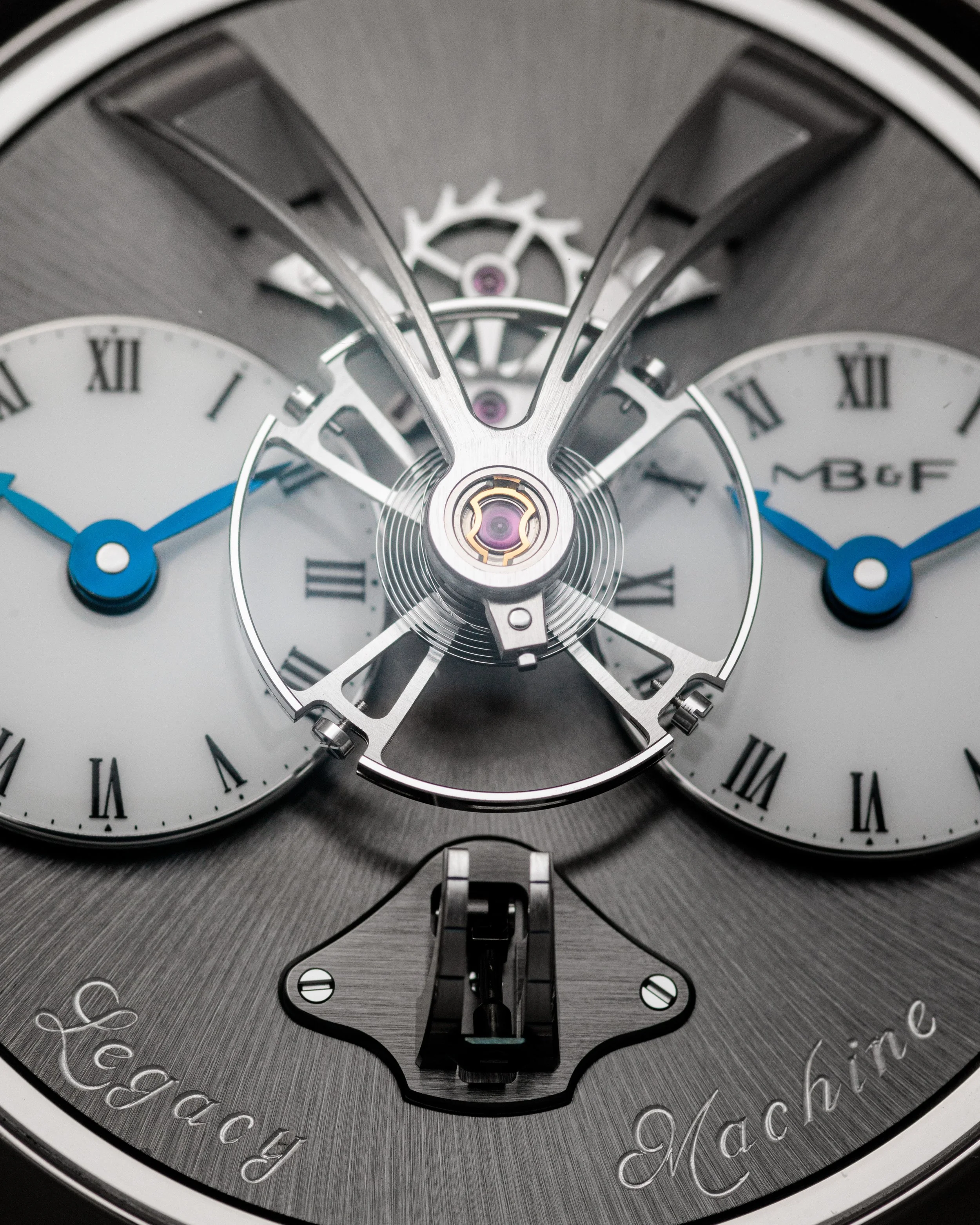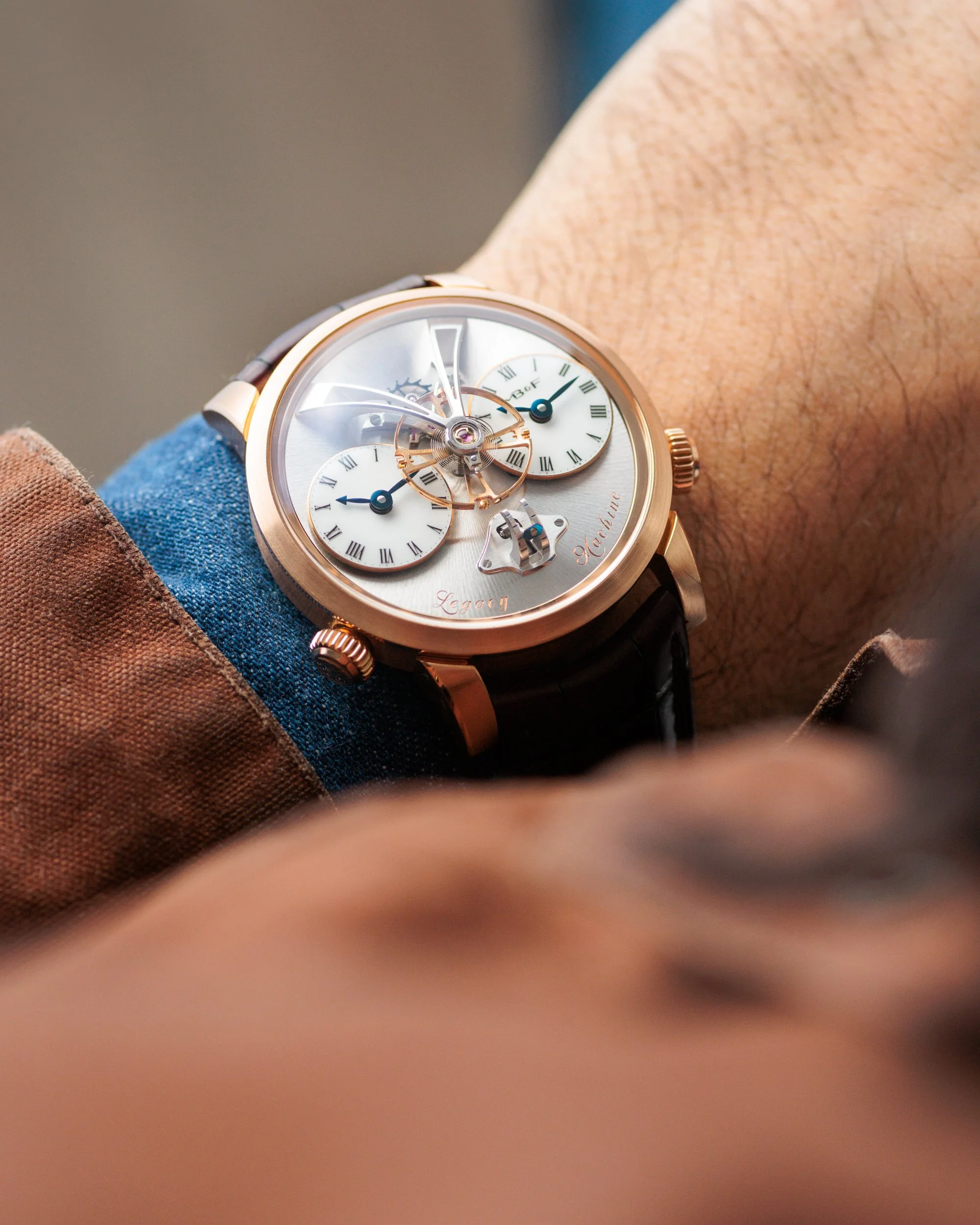The Icons – MB&F's Legacy Machine 1
MB&F is one of the main actors to propel modern independent watchmaking to its current heights. Even after nearly two decades of operating, Max Büsser and friends seem to be building only more and more momentum with every new creation. From the brand’s first timepiece, the HM1, all the way to its latest release, the HM8 Mark 2, they always find a way to push design and watchmaking limits. The brand’s entire catalog of timepieces is filled with marvels – things that would have been inconceivable in both mechanics and aesthetics only decades prior to their arrival. It’s for that reason that we found it so difficult to choose only one MB&F timepiece as we continue with our journey through the icons of modern independent watchmaking.
In the end, our choice is the Legacy Machine 1 – an exceptional fusion of traditional and avant-garde aesthetics in watchmaking. Fortunately, we were able to sit down with Max to discuss the origins and creative process behind the LM1.
The Icon – Unpacking MB&F’s LM1
It’s an understatement to say that the LM1 was quite a step outside the established norms for MB&F when it launched in 2011. Horological Machines laid the foundation for a form of watchmaking that often came across more robot or high-performance sports car on the wrist than “watch.” Legacy Machines are something much more in the realm of classical watchmaking – first and foremost, a round timepiece. The “classical” elements of the LM1 – the case shape, precious metals – all sit on the surface though. Beneath, this watch remains in line with MB&F’s thoroughly avant-garde approach. A ticking contradiction, the LM1 represents both the distant past and the far future.
When we spoke to Max, he said that the origins of this timepiece came down to a single maxim – ”I wanted to create a timepiece that was dedicated to the balance wheel.” He shared sketches of the earliest design, completed by long-time collaborator with MB&F, Eric Giroud. Those sketches show the centrality of the balance wheel – it had to be front and center. And so it was. At 44mm in diameter and encased in either 18K rose gold, white gold, or platinum, the original LM1 made a splash with its extra-large, slow-beating balance wheel as the centerpiece of the dial. Suspended without obvious connection to the movement, the LM1’s balance wheel is held in place by two arches. It floats and adds a degree of three-dimensionality to a dial that was (and remains to be) rare to encounter in watchmaking.



Sketches credit to Eric Giroud of MB&F
The balance wheel on the LM1 is so eye-catching that it often makes you overlook the other exceptional aspects of the dial. One is that both enameled dials with roman numerals operate independently – something rather unusual for a dual time zone watch. Another is that power reserve indicator moves vertically – a world’s first at the time of release.
In MB&F fashion, this timepiece came about through the collaboration of the brand alongside Kari Voutilainen and Jean-François Mojon. Mojon developed the architecture of this movement, tested and proved feasibility, while Kari ensured that everything looked the part of a classical timepiece. No easy task to strike a balance between the forward design of the LM1 and the mandate for classical finishing, the aesthetic aspects of this timepiece have Kari’s fingerprints all over it. From the finely engraved sun-ray pattern of the dial to the Côtes de Genève to the exceptionally large jewels (a nod to antique pocket watches) with polished countersinks and gold chatons, Kari establishes a very clear link to 19th century horological history.
One interesting anecdote from our conversation was that the original intention was not to create a new product line with Legacy Machines. The LM1 was originally supposed to be the HM5, but Max was never in love with the early designs of that timepiece. Those designs bore too much resemblance to another timepiece from an earlier generation of indie watchmaking, and eventually pivoted to a round case.
All of the above provides the context, what the LM1 is and how it came about. It does not provide reasons for why LM1 is iconic.
What makes the LM1 iconic
It’s easy to say that the seamless balance between past and future puts the LM1 into the category of icon in modern independent watchmaking. No one would be wrong for saying so, of course. But there are two less obvious reasons that will be the focus here. The first has to do with what we consider to be the development of a new aesthetic niche and the second is its impact on the entire spectrum of watch collectors.
It creates a new aesthetic Niche
In watchmaking, there are plenty of timepieces that represent that balance between classical and futuristic. Many of those watches fall into the category of “steampunk” – technologies of the future as viewed from different points in past. This aesthetic fits very well with watchmaking because it’s often spectacular contraptions and machines, driven entirely by mechanical or steam engines. It’s often viewed as what Victorian technology in the 21st century may be. With mechanics at its core, steampunk aesthetics are in some legendary independent watches from Vianney Halter’s Antiqua, Thomas Prescher’s Nemo Sailor, as well as Ludek Seryn’s Keral Rotation.
Where steampunk tends to feel intentionally haphazard – existing mechanics thrown together for a new purpose – the LM1 bears none of the same roughness. This is a form of retrofuturism that exhibits a finish that is decidedly not typical in this genre.
This is certainly one of the core aspects that makes the LM1 an icon in modern independent watchmaking. It opens the possibility to see and think of steampunk / retrofuturism in radically different terms. This is the Ferrari-version of steampunk – ultra-refined, sleek, cutting-edge.
It’s a rare unifying timepiece in the watch community
The other reason that the LM1 deserves its status as an icon of modern independent watchmaking has to do with the timepiece’s affect on the community – it unifies to a remarkable degree. In the watch community, there are different collector camps. There are collectors that gravitate towards vintage. Those that lean more toward avant-garde timepieces. Those that stay classic with more dress-y watches. There are (more than ever) collectors that traverse all of the categories, seeing each for its own importance in the development of watchmaking history. The thing about the LM1 though, it attracts all of the camps.
We know collectors that have no independent watches and love this timepiece. Collectors who don’t like modern avant-garde watchmaking … but love the LM1. And of course, for all collectors that love Horological Machines, this too appeals to them. While there will always be some nay-sayers, this is as close to unanimously admired in the watch industry as any timepiece goes. When we talk about the LM1 transcending steampunk, bringing the aesthetic someplace new, it also defies the traditional categories of watches to provide something attractive for nearly every type of watch collector. There’s that axiom in sales and marketing – ”a product for everybody is a product for nobody.” Well, this is a rare exception to the rule. And that’s why it’s iconic.




